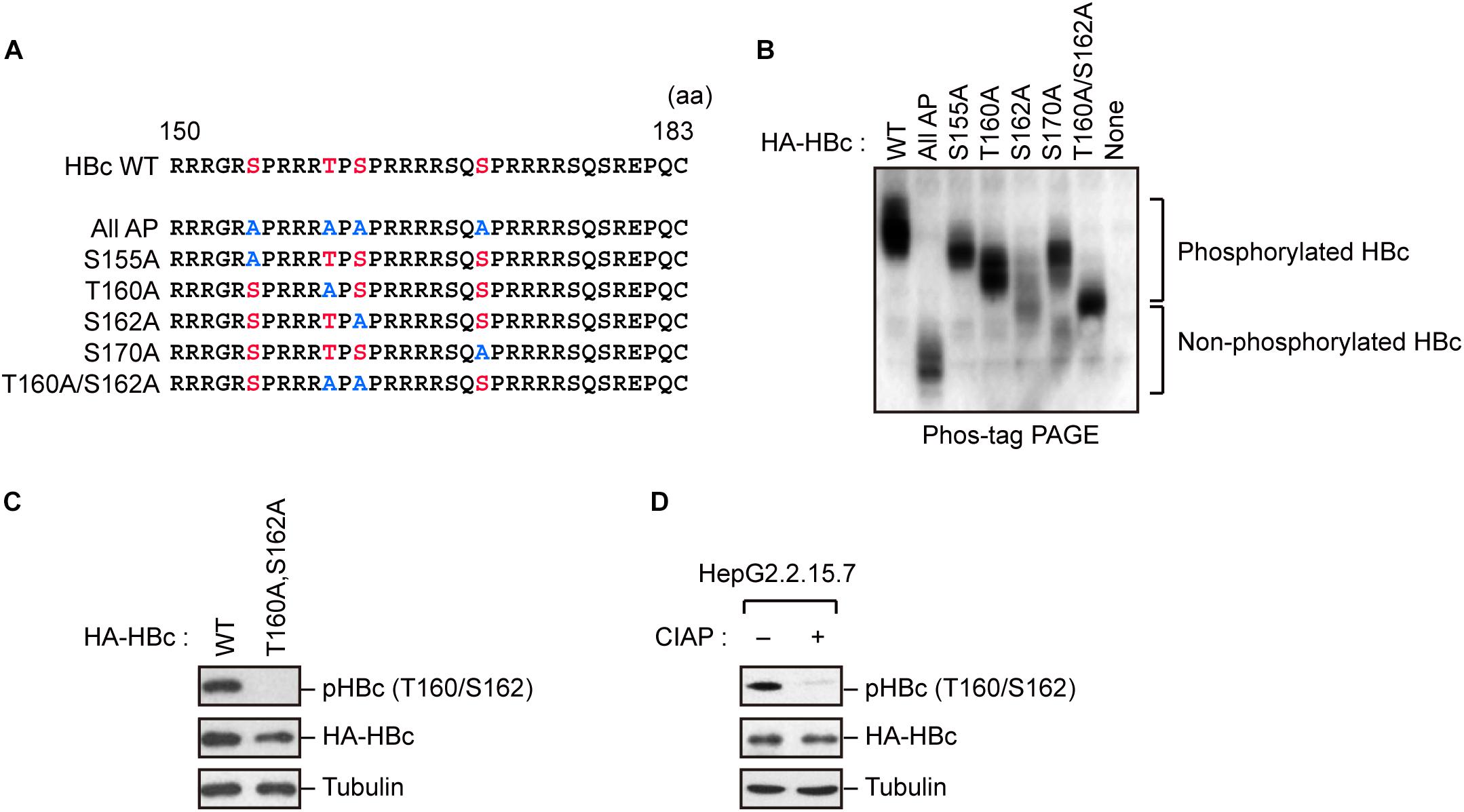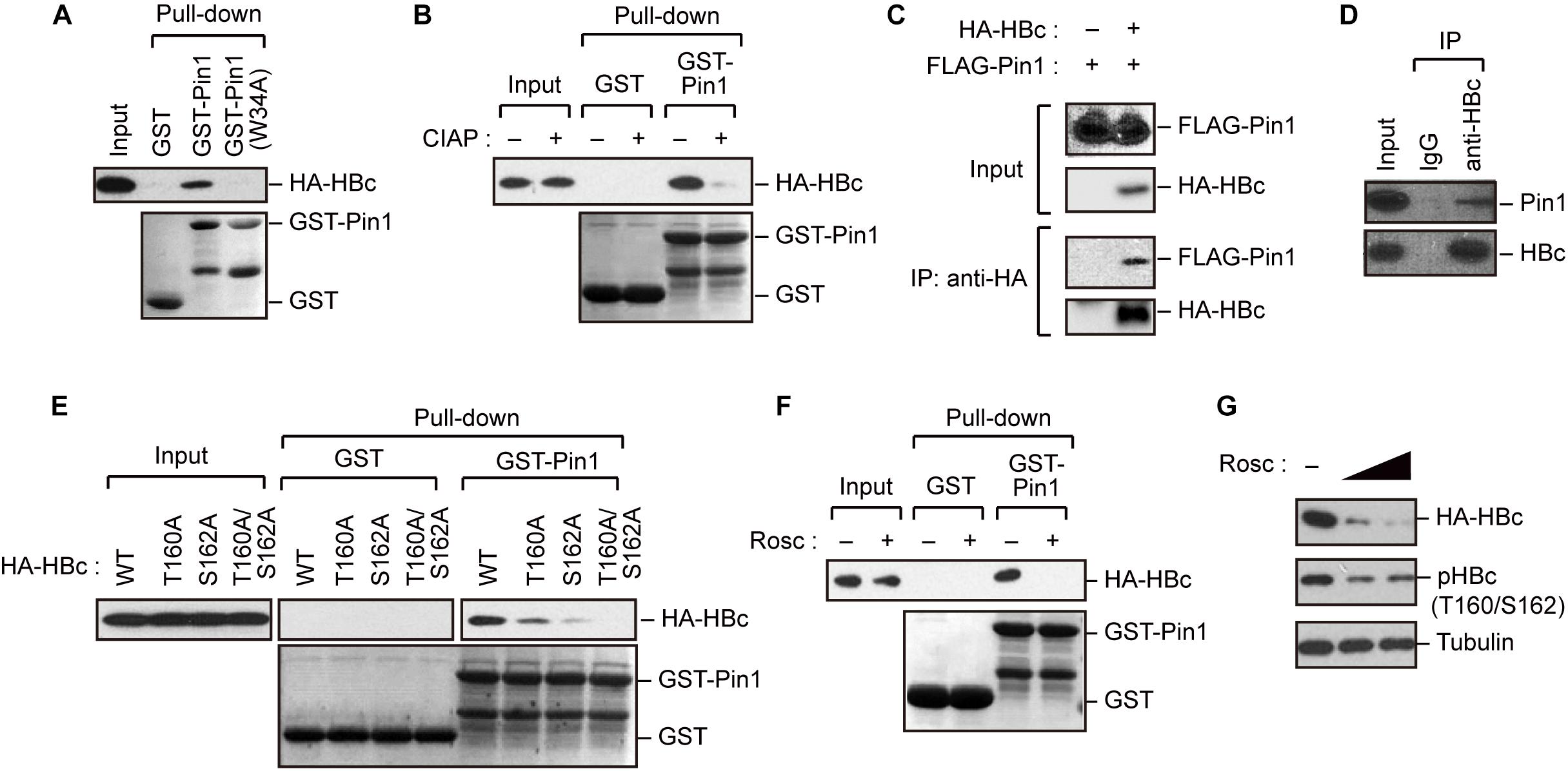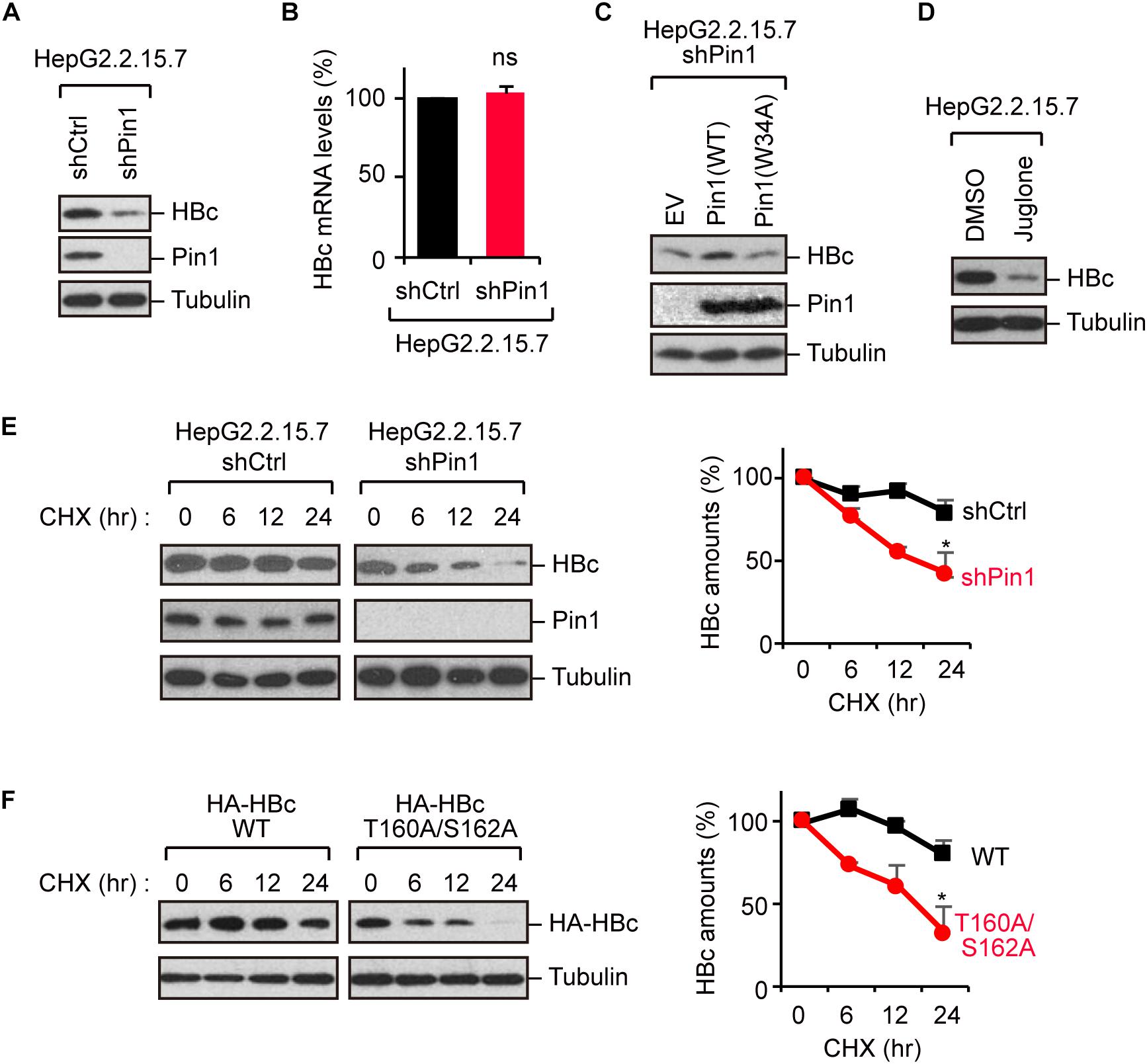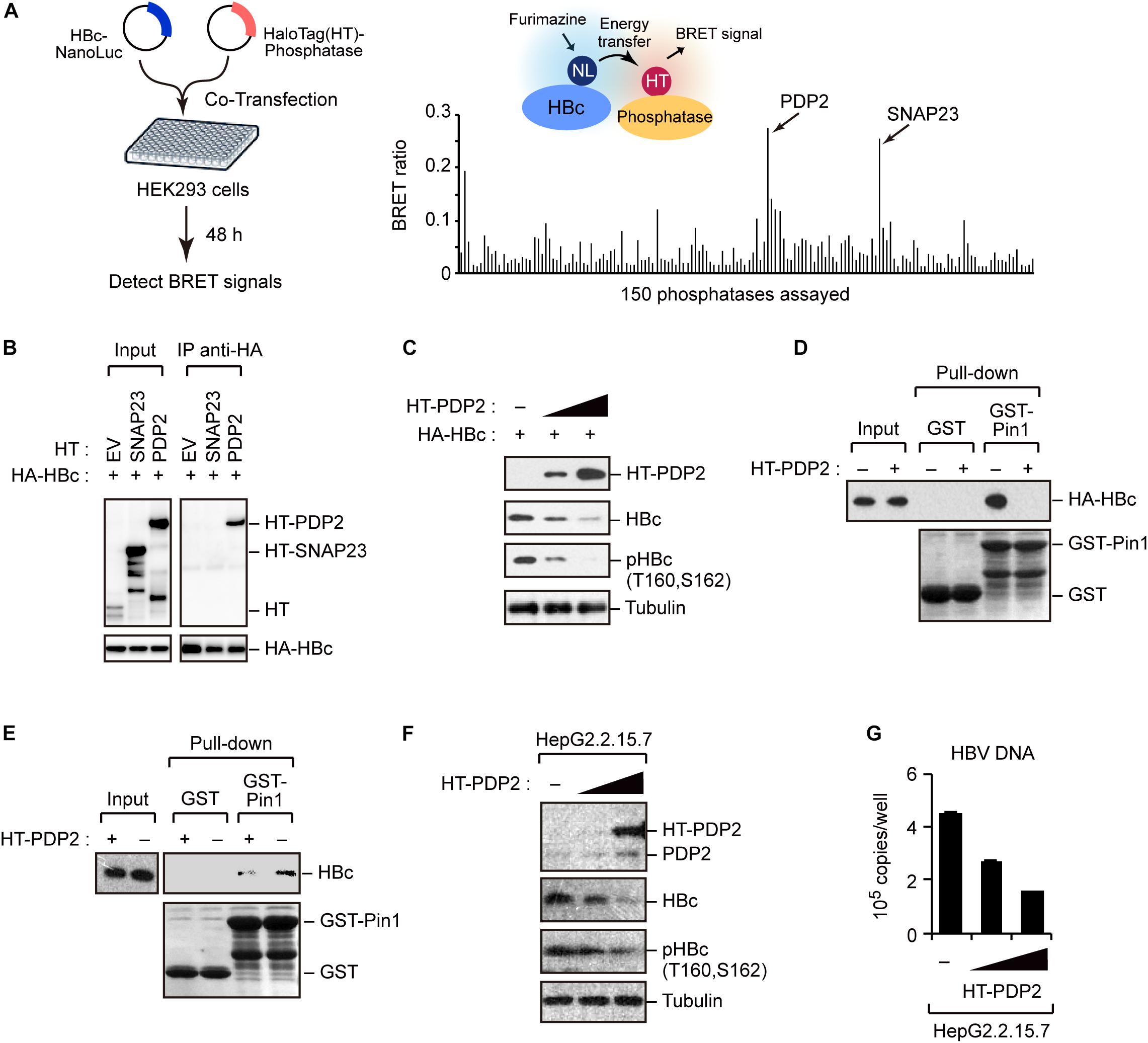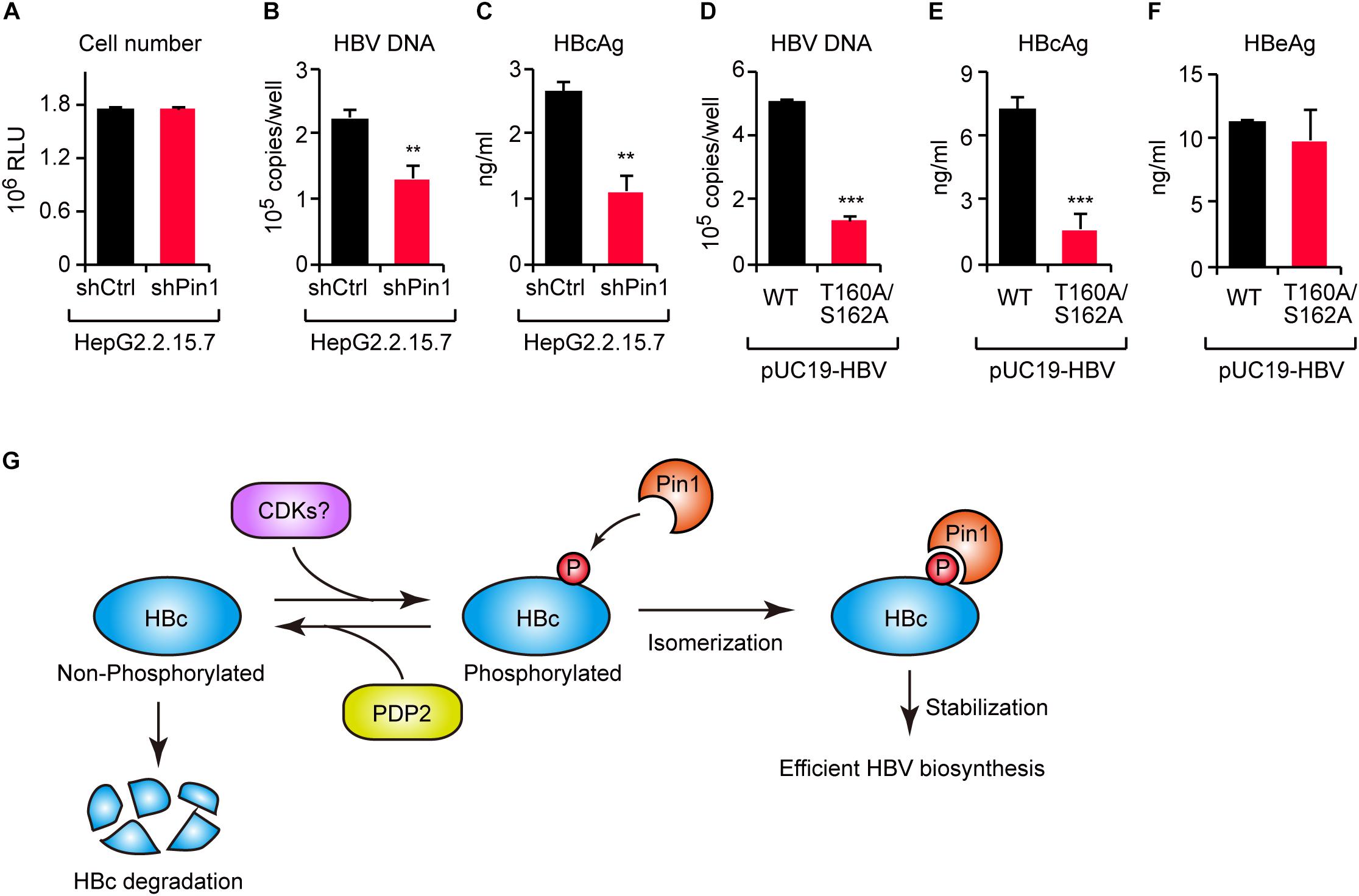基础,基础
Virus–host interactions play important roles in virus replication and pathogenesis(Brito and Pinney,2017)。Viruses have evolved a number of ways of hijacking host machinery and cellular regulatory mechanisms to produce progeny viruses,aswell as counteracting host immune systems(Mitra et al.2018)。Understanding these elaborate interactions may provide insight into the basic host elements indispensable for the viral life cycle,as well as antiviral host factors counteracting viral propagation。Moreover,the accumulation of information relevant to the molecular basis of virus–host interactions could be of great use in the development of new antiviral strategies。
Hepatitis B virus(HBV),aglobally leading infectious agent,is the main cause of hepatis,liver cirrhosis,and hepatocellular carcinoma(HCC)(cMahon,2005打开;Baumert et al.2007)。用于设计的HBV vaccine,approximately350 to 400million people are constantly infected with the virus in the world(Cryer and Imperial,2019)。在该区域,在该区域Lee and Ahn,2016打开;Wang et al.,2017)。HCC is a chief cause of cancer-associated deaths,highlighting the requirement for understanding the molecular mechanism that regulate HBV replication in chronically infected HBV patients。
The genome structure of HBV is composed of circular partially double-stranded DNA,which is approximately3.2kb long and encodes fourgenes designated C(core),X,P(polymerase),and S(surface)(Beck and Nassal,2007)。Among these viral proteins,HBV core protein(HBc)plays pivotal roles in the viral replication processes,acting as the basic unit for capsid assembly,and is involved in HBV genome replication and progeny virion biosynthesis(Zheng et al.,2019)。An essential structural element of HBV is the spherical capsid,which consists of multiple copies of a single HBc that contains viral pre-genomic RNA(pgRNA)and polymerase。HBc is a21.5-kDa protein and composed of two specific domains,the N-terminal self-assembly domain(amino acids1-140)and the C-terminal arginine-rich domain(CTD,amino acids150-185)for the nucleic acid-binding(Nassal,1992打开;Newman et al.2003打开;Steven et al.2005)。The CTD plays an essential role in the specific encapsidation of pgRNA and polymerase during replication。移动器,the phosphorylation of serine(Ser)or threonine(Thr)residues within the CTD can modulate multiple stages of HBV replication,such as viral core formation and subcellular localization(Diab et al.2018)。Although the accumulated evidence has emphhasized the functional significance of the phosphorylation of CTD,it is still unknown whether phosphorylated HBc(pHBc)is subjected to further post-phosphorylation regulation。
在产品中使用的产品或产品的产品级产品级产品级产品级产品级产品级产品级产品级产品级产品级产品级产品级产品级产品级产品级产品级产品级产品级产品级产品级产品级产品级产品级产品级产品级产品级产品级产品级产品级产品级产品级产品级产品级产品级产品级产品级产品级产品级产品级产品级产品级产品级产品级产品级产品级产品级产品级产品级产品级产品级产品级产品级产品级产品级产品级产品级产品级产品级产品级产品级产品级产品级产品级产品级产品级产品级产品级产品级产品级产品级产品级产品级产品级产品级产品级产品Lu et al.,2002)。Peptidyl-prolyl顺时针方向isomerase NIMA-interacting1(Pin1)isa regulator that specifically interact with phosphorylated Ser/Thr-Pro motifs and catalyzes thecisand,andtransamide isomer interconversion,leading to the conformational changes of its substrates(Lu and Zhou,2007)。This Pin1-mediated prolyl isomerization can provide further post-phosphoration modifications that control various protein functions,such as protein stability,catalytic activity,protein interactions,dephosphoration and/or subcellular localization(Wulf et al.2005打开;Lu et al.2007打开;Liou et al.2011打开;Nakamura et al.2012)。受影响的受影响的受影响的受影响的受影响的受影响的受影响的受影响的受影响的受影响的受影响的受影响的受影响的受影响的受影响的受影响的受影响的受影响的Kojima and Ryo,2010)。
Here,we demonstrate that Pin1binds pHBc and regulates its stability to sustain efficient viral replication。Specifically,we show that the targeted inhibition of Pin1 facilitates the prompt degradation of HBc via the lysomoal pathway。Furthermore,using NanoBRET technology,we showed that PDP2serves as anegative regulator for HBc by selectively dephosphorylating HBc,thereby inhibiting the Pin1–HBc interaction。Our findings reveal an important molecular mechanism of HBc stabilization by Pin1-dependent prolyl isomerization and might provide insight intonew antiviral therapeutics targeting Pin1function。
结果,结果
Phosphoration Sites in HBc CTD
Because HBc CTD contains multiple phospho-acceptor sites at Ser/Thr residues,wegenerated sited directed mutants in which Ser/Thr residues were replaced by alanine(火焰1A)。The wild-type(WT)HBc and the mutant proteins were expressed in cells,and cell lysates were subjected to Phos-Tagpolyacrylamide gel electrophoresis followed byimmunoblot analysis。其中phosphorylated proteins is reduced,separating them from non-phosphorylated proteins(specifically,the bands shift upward)(Kinoshita et al.2006)。WT HBc exhibited the most prominently shifted broad bands,reflecting its phosphorylation at multiple sites。On the other hand,HBc harboring aT160A or S162A mutation yielded relatively lower molecular weight bands than WT HBc and other site-directed mutants(S155A and S170A)。Notably,the T160A/S162A double mutantyielded a much lower molecular weight band,implying that both sites are phosphorylated within HBc(火焰1B)。To further confirm phosphorylation at Thr160and Ser 162,we produced a phospho-specific HBc antibody(anti-pHBc)that exclusively detects phosphorylated Thr160/Sr 162。Cells expressing either HA-tagged WT HBc or the T160A/S162A mutant were processed for the immunoblot analysis with anti-pHBc or anti-HA antibody。We observed phosphorylation of HBc only in WT HBc,but not in the T160A/S162A mutant(火焰1C)。Importantly,the phosphoration signal was also detected in stably HBV-producing HepG2.2.15.7 cells,but this signal was diminished when the cell lysate was pre-treated with calf intestine alkaline phosphatase(CIAP)(火焰1D)。These results indicate that Thr160and Ser 162are distinct phosphorylation sites within HBc。
Pin1 Interacts With Phosphorylated HBc
The results described above indicate that HBc is phosphorylated at Thr160and Ser 162,both of which are potential Pin1-binding sites(pSer/Thr-Pro)。We next asked whether Pin1directly binds to these sites within HBc。To this end,we generated recombinant GST-Pin1 and the WW domain mutant(W34A),which lacks pSer/Thr-Pro binding activity(Zhou et al.2000)。GST pull-down assay with whole-cell lysate from HepG2cells expressing HA-HBc revealed that HBc co-precipitated with GST-Pin1but not with GST-Pin1W34A or control GST(火焰2A)。(GST pull-down analysis,GST pull-down analysis,GST pull-down analysis,GST pull-down analysis,GST pull-down analysis)火焰2B),indicating that Pin1canonly interact with pHBc。Theintracellular interaction between HBc and Pin1was also confirmed byimmunoprecipitation analysis where Pin1was co-precipitated with HA-HBc(火焰2C)。We also observed that endogenous Pin1 could bind HBc in HBV-producing cells(火焰2D)。We next attempted to determine the Pin1-binding sites for HBc。HepG2cells were transfected with plasmid encompassing HA-HBc or its mutants(T160A,S162A,or T160A/S162A),andthen subjected to GST pull-down assay。We found that single site-directed mutation(T160A and S162A)resulted in the prominent reduction of co-precipitated HBc with GST-Pin1(火焰2E)。Notably,HBc harboring a double mutation(T160A/S162A)completely lost the ability to bind GST-Pin1(火焰2E)。These results illustrate that Pin1directly interacts with pHBc at Thr160and Ser 162。(1)安装板,安装板,安装板,安装板,安装板,安装板火焰1B),we found that a single site-directed mutant(S162A)still interacted with Pin1with relatively lower binding activity。Since mutation in both sites(T160A/S162A)completely abolished its Pin1-binding,these results indicate that Thr160is an another Pin1binding-phosphorylated residue。
Given that HBc CTD can be phosphorylated by cyclin-dependent kinases(CDKs)(Ludgate et al.2012),we next asked whether the inhibition of CDKs could affect the Pin1interaction with HBc。We found that treatment with the broad-spectrum CDK inhibitor roscovitine significantly reduced Pin1–HBc binding along with decreased levels of pHBc(Figures2F,G),indicating that CDKs contribute to the Pin1-HBc interaction,presumably by mediating the phosphorylation of Thr160/Ser162residues。
Pin1Regulates HBc Stability
Because Pin1is a general regulator of protein stability,it is plausible that Pin1could stabilizeHBc。To test this proposition,we knocked down Pin1in HepG2.2.15.7cells by stable transduction of Pin1-specific shRNA.Immunoblot analysis demonstrated that HBc expression was significantly decreased upon Pin1depletion(火焰3A)。Notably,a parallel experiment showed that HBV mRNA levels were not significantly altered following Pin1 depletion(火焰3B),indicating post-translational regulation of HBc。HBc was also observed in Pin1-knockdown HepG2.2.15.7 cells,and this reduction was rescued by transient expression of Pin1,but not Pin1W34A(火焰3C)。We also found that the Pin1 inhibitor juglone(Chao et al.,2001)prominently reduced the protein expression of HBc(火焰3D)。Cycloheximide analysis further revealed that the protein stability of HBc was prominently decreased in Pin1-knockdown cells as compared with control cells(火焰3E)。Together,these results suggest that Pin1inhibition decreases HBc stability,thereby decreasing the HBc protein level in cells。
To further delineate the functional implication of the Pin1-HBc interaction,we investigated the protein stability of the T160A/S162A mutant,which is unable to bind Pin1。Cycloheximide analysis demonstrated that the HBc-T160A/S162A mutant was conspicuously destabilized relative to WT HBc(火焰3F),confirming that Pin1indeed regulates the HBc stability by interacting with the phosphorylated Thr160-Pro and Ser162-Pro motifs。
Pin1 Inhibits Lysosomal Degradation of HBc
Given that Pin1stabilizes HBc,we next attempted to clarify the molecular pathway by which HBc degraded。To this end,we utilized chemical inhibitors,bafilomycin and NH4个Cl(lysomome inhibitors)or MG132(proteasome inhibitor)。Pin1-depleted HepG2.2.15.7 cells were treated with each inhibitor for24h,and HBc protein levels were examined by immunoblotting。Our result demonstrated that bafilomycin and NH4个Cl,but not MG132,prominently reverted the HBc instability upon Pin1knock-down(火焰4A),indicating that Pin1might inhibit the endo-lysosomoal degradation of HBc。Immunofluorescence analysis demonstrated that HBc was colocalized with the lysome,forming cytoplasmic focin Pin1-knockdown cells whereas control cells exhibited a relatively diffuse pattern of HBc in the cytoplasm without lysomal co-localization(火焰4B)。Together,these results indicate that Pin1counteracts the lysomoal degradation of HBc。
Pin1 Bindings Sites Within HBc
To better understand the regulation of HBc stability,we screened host phosphatases that remove phosphate(s)from pHBc。For this object,we performed the NanoBRET protein–protein interaction assay(Machleidt et al.2015)。This method employs a NanoLuc fusion protein as the bioluminescent donor and a fluorescently labeled HaloTag fusion protein as the acceptor。We cotransfected the NanoLuc-tagged HBc and 150 different HaloTag-conjugated phosphatases into HEK293cells(火焰5A,left)。At48h post-transfection,the BRET signal was visualized,and a BRET ratio>0.2was used as the threshold。SNAP23和PDP2 whose BRET signals were much higher than those of other phosphatases(火焰5A,right)。Accordingly,we focused on SNAP23and PDP2 for further functional analysis。To investigate the direct interaction of the phosphatases with HBc,we performed immunoprecipitation analysis using HepG2cells co-transfected with plasmids encoding HA-HBc and either HT-PDP2 or SNAP23。Our result revealed that HBc was co-precipitated with PDP2,but not with SNAP23(火焰5B),indicating that PDP2can physically associate with HBc。
We next asked whether PDP2could dephosphorylate HBc。HepG2cells were co-transfected with HA-HBc and HT-PDP2。After48h,cells were harvested and cell lysate s were subjected to immunoblot analysis Our data demonstrated that PDP2expression decreased the level of HBc while dephosphorylating it in a dose-dependent manner(火焰5C)。一致with this,GST pull-down assay revealed that PDP2overexpression inhibited the interaction between Pin1and HBc(火焰5D)。These results were also confirmed in HepG2.2.15.7 cells;PDP2was able to decrease pHBc and interfere with Pin1-HBc interaction(Figures5E,F)。(HBc could negatively regulate HBV particle production)火焰5G)。These results together indicate that PDP2-mediated HBc dephosphorylation results in the dissociation of Pin1 from HBc,thereby reducing HBc stability as well as HBV biosynthesis。
Pin1–HBc Interaction on HBV Propagation
To investigate the functional role of Pin1in HBV replication,we attempted to knock down Pin1in HepG2.2.15.7 cells that can stably secrete viral particles in culture supernatant。We then analyzed HBV DNA and virus core antigen(HBcAg)in the cell supernatant by quantitative PCR and ELISA,respectively。(1千瓦瓦顶面1千瓦顶面层)火焰6A),but prominently decreased the levels of both viral DNA and HBcAg relative to control cells(Figures6B,C),indicating a reduction in viral particle production。To further delineate the biological importance of the Pin1-HBc interaction,we tested the efficiency of virus production of HBV encoding WT HBc or its T160A/S162A mutant。HepG2cells were transfected with an HBV molecular clone(either WT or T160A/S162A),and supernatants were collected to analyze HBV DNA and HBcAg。Amounts of HBV DNA and HBcAg,but not HBeAg devoid of Pin1-binding site,were significantly reduced in the case of the T160A/S162A virus relative to the WT virus(Figures6D-F)。Together,these results indicate that the Pin1interaction with HBc stabilizes HBc,eventually leading to efficient virus particle production in HBV infected cells。
Discussion
Viral proteins are required to interact with host proteins to maintain the viral life cycle。Some host proteins act asantiviral factors to restrict viral propagation,whereas others interact with viral proteins in a manner that sustains viral replication。Understanding the molecular operations of the virus-host interaction will aid in identification of new therapeutic targets and to develop antiviral strategies。In this study,we revealed that the peptidyl-prolyl isomerase Pin1is a potent host factor that binds HBc and facilitates viral biogenesis。Moreover,by screening a phosphatase library,we identified PDP2as the phosphatase responsible for the dephosphorylation of Thr160/Ser162residues within HBc。PDP2counteracts Pin1-mediated HBc stabilization,thereby decreasing virus propagation(火焰6G)。Our current findings shed new light on a virus–host interaction mediated by viral protein phosphorylation and subsequent prolyl isomerization by Pin1。
产品质量保证和按质量保证的产品质量保证和按质量保证的产品质量保证Hunter,1995)。Phosphorylated proteins are likely to undergo anoveltype of post-phosphorylation regulation by Pin1。Pin1recognizes phosphorylated serine or threonine residue immediately preceding a proline residue(pSer/Thr-Pro)(Ryo et al.2003)。Following the binding to substrates,Pin1 catalyzes the conformationvia cis-transisomerization of the peptide bonds,which alters the catalytic activity,localization,and stability of target proteins(Ryo et al.2003打开;Lu and Zhou,2007)。Our current observations show that Pin1binds to phosphorylated HBc,thereby stabilizing the viral protein。Accordingly,Pin1inhibition promotes HBc degradation via the lysomoal pathway to reduce progeny viral production。Our results reveal a previously undescribed role of Pin1 in the post-phosphorylation regulation of HBc and suggest that the Pin1 inhibition represents a promising new therapeutic option for treating HBV-related diseases。
The post-phosphorylation switch mediated by Pin1is involved in the stability and function of several viral proteins。For example,Pin1 modulates DNA polymerase conformation of Epstein–Barr virus and is responsible for productive viral replication(Narita et al.2013)。Pin1also binds to the non-structural NS5A/NS5B proteins of Hepatitis C virus,stabilizing them(Lim et al.2011)。HIV-1 in genome integrationManganaro et al.2010)和capsid uncoating(Misumi et al.2010)are also regulated by Pin1。Moreover,Pin1has been shown to enhance the stability of human T-cell leukemia virus type1 Tax oncoprotein and facilitate the malignant transformation(Jeong et al.2009)。HBV infection,Pin1binds HBx protein and increase its transcriptional competency to cell proliferation and oncogenesis(Pang et al.2007)。These studies demonstrate that Pin1plays a pivotal function in viral replication for a broad range of viruses。However,the role of Pin1in HBV replication,especially in viral core formation,has yet to be resolved。Inour current report,we demonstrated that Pin1also associate with phosphorylated HBc and stabilizes HBc,thereby promoting efficient virus propagation。Although we found that Pin1suppressed HBc degradation through the inhibition of endo-lysomomal-mediated degradation pathway,its precise mechanism is still uncertain。A previous report showed that intracellullar HBc proteins could be transported to early endosomes and lysomes,depending on the adaptor protein Eps15and the small GTPase Rab5(Cooper and Shaul,2006)。Pin1may prevent the association of these factors to HBc。Further careful analysis will be required to more precisely determine the molecular function of Pin1with regard to HBc turnover during HBV particle production。
Hepatitis B virus core protein contains several phosphoration recognition motifs at Ser or Thr residues preceding Pro(Ser/Thr-Pro)inits CTD phospho-acceptor sites,which are remarkably well conserved among related viruses(Jung et al.2014)。预应力输送管道已完成施工in vivo(Chen et al.2011)。Especially,the Ser-Pro motifs at positions 155162,and 170,are high ly retained,and phosphorylated by multiple host serine/threonine protein kinases(Daub et al.2002打开;Ludgate et al.2012)。The HBc protein contains another three major phosphorylated serine residues(Ser 155、162、and 170),along with four additional phosphorylated serine residues(Ser 168、176、and 178)and one phosphorylated threonine residue(Thr 160)(Lan et al.1999打开;Steven et al.2005打开;Jung et al.2014打开;Ludgate et al.2016)。By screening the Ser/Thr phosphorylation of HBc CTD using Phos,we also identified two concomitant phosphorylation at Thr 160 and Ser 162,consistent with previous results(Jung et al.2014打开;Heger-Stevic et al.2018)。(CDK2)Ludgate et al.2012),protein kinase C(PKC)(Kann and Gerlich,1994),cyclin-dependent protein kinase p34cdc2(also known as CDK1)(Yeh et al.,1993),the46-kDa serine protein kinase(Kau and Ting,1998),and serine/arginine-rich protein kinases1and2(SRPK1/2)(Daub et al.2002打开;Heger-Stevic et al.2018)。PLK1 is also involved in CTD phosphoration(Diab et al.2017)。However,it remains unclear whether phosphorylated HBc is conversely dephosphorylated by host phosphatases。Therefore,we screened a phosphatase library to uncover the molecular mechanisminvolved in the phosphorylation/dephosporylation regulation of HBc。By screening 150genes in the phosphatase library,we found that PDP2 interacts with phosphorylated HBc and dephosphorylates it,leading to HBc degradation and reduction of viral production。PDP2dephosphorylates and reactivates the alpha subunit of the E1 component of the pyruvate dehydrogenase complex,and is thus involved in the enzymatic resetting of the pyruvate dehydrogenase complex(花环,1998)。Therefore,it would be interesting to examine the relationship between glucose metabolism,HBc phosphorylation,and virus replication。
矩阵和度量
中心Culture
HEK293cells(ATCC,CRL-1573)and HepG2cells(ATCC,HB-8065)were cultured in DMEM(Fujifilm Wako)containing10%FBS.HepG2.2.15.7 cells(Iwamoto et al.2017)were cultured with DMEM/F-12,GlutaMAX(Thermo Fisher Scientific)supplemented with 10%FBS,10mM HEPES(Thermo Fisher Scientific),and5μg/ml insulin(Sigma-Aldrich)。HepG2and HepG2.2.15.7 cells were grown on collagen-coated dishes。
shRNA-Mediated Gene Silencing
To generate Pin1-depleted cells,cells were infected with retrovirus vector carrying Pin1-specific shRNA(Ryo et al.2005)。预应力生产,Plat-E cells(Morita et al.2000)were transduced with pSUPER.retro vector and pVSV-G with Effectene reagent(Qiagen)。After48h,cell supernatants were filtrated with a0.45-μm filter and added with10μg/ml Polybrene。目标cells were then selected with1μg/ml puromycin(InvivoGen)。
GST Pull-Down,Immunoprecipitation,and Immunoblotting Analyses
GST pull-down assay was previously described(Nishi et al.2011)。Briefly,cells were treated with100nM bafilomycin A1and4mM NH4个Cl for 15h before harvesting,treated with GST pull-down buffer(50mM HEPES pH7.4200mM NaCl,10%glycerol,1%Triton X-100,1.5mM MgCl2,1mM EGTA,1mM EDTA,100mM NaF,1mM Na3VO4个,0.5μg/ml leupeptin,1μg/ml pepstatin,and0.2mM PMSF),and incubated at4°C for3h with glutathione-agarose beads containing either GST or GST-Pin1。The collected beads were then washed three times with GST pull-down buffer and processed for SDS-PAGE。To immunoprecipitate proteins,cells were harvested and lysed with NP-40 lysis buffer(10mM Tris–HCl pH7.4,100mM NaCl,1%NP-40,2mM EDTA,1%sodium deoxycholate,50mM NaF,1mM Na3VO4个,0.5μg/ml leupeptin,1μg/ml pepstatin,and0.2mM PMSF)。Cell lysates were then incubated for1h with protein A/G-Sepharose beads(GE Healthcare)。Supernatant fractions were recovered and immunoprecipitated with4μg of mouse IgG or anti-HA(MBL)together with20μl of protein A/G–Sepharose at4°C for3h.After washing three times with lysis buffer,the bound proteins were analyzed by immunoblotting,as previously described(Miyakawa et al.2018单击功能区上,2019)。焊缝12.5%acrylamide gel containing 50μPhos-tag(Fujifilm Wako)。Source data are provided as a摘要材质(数据表S1单击功能区上,摘要材质)。
Plasmids and Antibodies
The hepatitis B virus molecular clone puc 19-C_JPNAT(genotype C)has been described previously(Sugiyama et al.2006)。HBc cDNAs were amplified from puc 19-C_JPNAT with the appropriate primer pairs,followed by subcloning into the pcDNA-based N-HA vector(Thermo Fisher Scientific)。The HBc derivatives were constructed using PCR-based mutagenesis。The primary antibodies used in this study were as follows:anti-HA(MBL),anti-Flog and anti-α-tubulin(Sigma-Aldrich),anti-Pin1(R&D System),anti-HaloTag(Promega),andanti-HBc monoclonal antibody(Kanto Chemical)。Aphospho-specific polyclonal antibody against HBc phosphorylated at Thr160and Ser162was generated by Scrum Inc.(Tokyo,Japan)。
Protein Degradation Assay
Protein degradation assays were performed as described previously(Nishi et al.2011)。Briefly,100μcycloheximide was added to the medium,and the cells were harvested at the indicated time points。Total cell lysates in SDS sample buffer were boiled and analyzed by immunoblotting。
Microscopic Analysis
icroscopic procedure was previously described(Miyakawa et al.2017)。Briefly,HepG2cells were seeded onto glass cover slips1day before transfection。At48h post-transfection,the cells were fixed with4%paraformaldehyde and permeabilized with0.5%Triton X-100。The cells were then stained with anti-HA(MBL)and Alexa Fluor488-conjugated secondary antibody(Thermo Fisher Scientific)。For lysosome staining,cells were treated with Lysosomes-RFP reagents(Thermo Fisher Scientific)at16h prior to fixation。icroscopic imaging was performed with an FV1000-Dconfocal microscope(Olympus)。Line plots of the fluorescence intensity were generated using the ImageJ software(NIH)。
NanoBRET-Based Protein–Protein Interaction Assays
Expression vectors encoding N-terminally HaloTag-conjugated host proteins(human phosphatases)were prepared by Kazusa Genome Technologies(Chiba,Japan)or purchased from Promega。NanoBRET analysis were performed as described previously(Miyakawa et al.2019)。Briefly,HEK293cells were transfected with vectors encoding HaloTag-fused protein and NanoLuc-fused HBc ata100:1ratio。At48h post-transfection,NanoBRET activity was measured using the NanoBRET Nano-Glo Detection System(Promega)。
HBV Quantification Assays
Hepatitis B virus quantification procedure were previously described(Miyakawa et al.2015)。Culture supernatants of HepG2.2.15.7 cells or HepG2cells expressing HBV molecular clone were clared of cell debris by centrifugation at3000rpm for3min.The HBcAg and HBeAg amounts in the culture supernatants were measure using HBcAg and HBeAg ELISa kit(Cell Biolabs),respectively。To remove the plasmid-derived DNA,culture supernatants were digested at37℃for2h with200μg/ml DNase I,100μg/ml RNase A,and6mM MgOAc,and then centrifuged at13000rpm for1min.The supernatants were then mixed with a buffer containing 10mM EDTA,1%SDS,100mM NaCl,and200μg/ml proteinase K(Roche),and incubated at55°C for1h.These samples were extracted with phenol/chloroform,precipitated with ethanol,and dissolved in TE buffer(10mM Tris–HCl pH8.0,1mM EDTA)。Amount of viral DNA was measured by real-time PCR using SYBR Premix Ex Taq II(Takara)as previously described(Miyakawa et al.2015)。For quantification of intracellular viral RNA,total RNA extraction was performed using the Trizol reagent(Thermo Fisher Scientific)and cDNA synthesis was conducted with ReverTra Ace(Toyobo),respectively。
数据可用性状态
The datasets generated for this study are available on request to the corresponding author。
Author Contributions
N and KM designed and performed the research,analyzed the data,and wrote the manuscript。SM and YY performed the research and analyzed the data。HKh analyzed the data and wrote the manuscript。KW and MS contributed reagents and analyzed the data。HKi and TW analyzed the data。AR directed the research,analyzed the data,and wrote the manuscript。
Funding
This work was supported in part by Research complex program of JST to AR,JSPS grants16H05198to AR and 19K07594to KM,and AMED grants JP19fk0310103to AR and JP19fk0310104 to KM。
Conflict of Interest
YY is a current employee of Kanto Chemical Co.,Inc。
The remaining authors declare that the research was conducted in the absence of any commercial or financial relationships that could be construed as potential conflict of interest。
The handling Editor declared a past co-authorship with authors KW and MS。
Acknowledgments
We thank Mina Dairaku for her technical assistance。
摘要材质
this article can be found online at:https://www.frontiersin.org/articles/10.3389/fcell.2020.00026/full#supplementary-material
DATA SHEET S1|完全images of the immunoblots presented inFigures1–4个。
DATA SHEET S2|完全images of the immunoblots presented in火焰5。
参考,参考
Baumert,T.F.,Thimme,R.,and Von Weizsacker,F.(2007)。Pathogenessis of hepatitis B virus infection。World J.Gastroenterol。13,82-90。
PubMed Abstract|Google Scholar
Chao,S.H.,Greenleaf,A.L.,and Price,D.H.(2001)。Juglone,an inhibitor of the peptidyl-prolyl isomerase Pin1,also directly blocks transcription。Nucleic Acids Res。29767-773。doi:10.1093/nar/29.3.767
PubMed Abstract|CrossRef Full Text|Google Scholar
Chen,C.,Wang,J.C.,and Zlotnick,A.(2011)。A kinase chaperones hepatitis B virus capsid assembly and captures capsid dynamics in vitro。PLoS Pathog。7:e1002388。doi:10.1371/journal.ppat.1002388
PubMed Abstract|CrossRef Full Text|Google Scholar
Daub,H.,Blencke,S.,Habenberger,P.,Kurtenbach,A.,Dennenmoser,J.,Wissing,J.,et al.(2002)。Identification of SRPK1 and SRPK2as the major cellular protein kinases phosphorylating hepatitis B virus core protein。J.Virol。768124-8137。doi:10.128/jvi.76.16.8124-8137.2002
PubMed Abstract|CrossRef Full Text|Google Scholar
Diab,A.,Foca,A.,Fusil,F.,Lahlali,T.,Jalaguier,P.,Amirache,F.,et al.(2017)。Polo-like-kinase1is a proviral host factor for hepatitis B virus replication。高度,高度661750-1765。doi:10.1002/hep.29236
PubMed Abstract|CrossRef Full Text|Google Scholar
Diab,A.,Foca,A.,Zoulim,F.,Durantel,D.,and Andrisani,O.(2018)。The diverse functions of the hepatitis B core/capsid protein(HBc)in the viral life cycle:implications for the development of HBc-targeting antivirals。Antiviral Res。149211-220。doi:10.1016/j.antiviral.2017.11.015
PubMed Abstract|CrossRef Full Text|Google Scholar
Heger-Stevic,J.,Zimmermann,P.,Lecoq,L.,Bottcher,B.,and Nassal,M.(2018)。Hepatitis B virus core protein phosphorylion:identification of the SRPK1 target sites and impact of their occupancy on RNA binding and capsid structure。PLoS Pathog。14:e1007488。doi:10.1371/journal.ppat.1007488
PubMed Abstract|CrossRef Full Text|Google Scholar
Huang,B.,Gudi,R.,Wu,P.,Harris,R.A.,Hamilton,J.,and Popov,K.M.(1998)。Isoenzymes of pyruvate dehydrogenase phosphatase。DNA-derived amino acid sequences,expression,and regulation。J.Biol。Chem。27317680–17688。doi:10.1074/jbc.273.28.17680
PubMed Abstract|CrossRef Full Text|Google Scholar
Hunter,T.(1995)。Protein kinases and phosphatases:the yin and yang of protein phosphorylation and signaling。中心,中心80225-236。doi:10.1016/0092-8674(95)90405-0
CrossRef Full Text|Google Scholar
Iwamoto,M.,Cai,D.,Sugiyama,M.,Suzuki,R.,Aizaki,H.,Ryo,A.,et al.(2017)。Functional association of cellular microtubules with viral capsid assembly supports efficient hepatitis B virus replication。Sci。Rep。7:10620。doi:10.1038/s41598-017-11015-4
PubMed Abstract|CrossRef Full Text|Google Scholar
Jeong,S.J.,Ryo,A.,and Yamamoto,N.(2009)。The prolyl isomerase Pin1stabilizes the human T-cell leukemia virus type1(HTLV-1)Tax oncoprotein and promotes malignant transformation。Biochem。Biophys。Res.Commun。381294-299。doi:10.1016/j.bbrc.2009.02.024
PubMed Abstract|CrossRef Full Text|Google Scholar
Jung,J.,Hwang,S.G.,Chwae,Y.J.,Park,S.,Shin,H.J.,and Kim,K.(2014)。Phosphoacceptors threonine 162 and serines 170 and 178 within the carboxyl-terminal RRS/T motif of the hepatitis B virus core protein make multiple contributions to hepatitis B virus replication。J.Virol。888754–8767。doi:10.128/JVI.01343-14
PubMed Abstract|CrossRef Full Text|Google Scholar
Kann,M.,and Gerlich,W.H.(1994)。Effect of core protein phosphorylation by protein kinase conencapsidation of RNA within core particles of hepatitis B virus。J.Virol。687993-8000。doi:10.1128/jvi.68.12.7993-8000.1994
PubMed Abstract|CrossRef Full Text|Google Scholar
Kinoshita,E.,Kinoshita-Kikuta,E.,Takiyama,K.,and Koike,T.(2006)。Phosphate-binding tag,anewtool to visualize phosphorylated proteins。Mol.Cell。Proteomics5749-757。doi:10.1074/mcp.t50024-mcp200
PubMed Abstract|CrossRef Full Text|Google Scholar
Lan,Y.T.,Li,J.,Liao,W.,and Ou,J.(1999)。Roles of the three major phosphorylation sites of hepatitis B virus core protein in viral replication。Virology259342–348。doi:10.1006/viro.19999.9798
PubMed Abstract|CrossRef Full Text|Google Scholar
Lee,H.W.,and Ahn,S.H.(2016)。Prediction models of hepatocellular carcinoma development in chronic hepatitis B patients。World J.Gastroenterol。228314-8321。
PubMed Abstract|Google Scholar
Lim,Y.S.,Tran,H.T.,Park,S.J.,Yim,S.A.,and Hwang,S.B.(2011)。Peptidyl-prolyl isomerase Pin1isa cellular factor required for hepatitis C virus propagation。J.Virol。858777-8788。doi:10.128/JVI.0253-10
PubMed Abstract|CrossRef Full Text|Google Scholar
Ludgate,L.,Liu,K.,Luckenbaugh,L.,Streck,N.,Eng,S.,Voitenleitner,C.,et al.(2016)。Cell-free hepatitis B virus capsid assembly dependent on the core protein C-terminal domain and regulated by phosphorylation。J.Virol。905830-5844。doi:10.128/JVI.00394-16
PubMed Abstract|CrossRef Full Text|Google Scholar
Ludgate,L.,Ning,X.,Nguyen,D.H.,Adams,C.,Mentzer,L.,and Hu,J.(2012)。Cyclin-dependent kinase2phosphorylates s/t-psites in the hepadnavirus core protein C-terminal domain and is incorporated into viral capsids。J.Virol。8612237-12250。doi:10.128/JVI.01218-12
PubMed Abstract|CrossRef Full Text|Google Scholar
Machleidt,T.,Woodroofe,C.C.,Schwinn,M.K.,Mendez,J.,Robers,M.B.,Zimmerman,K.,et al.(2015)。NanoBRET–Anovel BRET platform for the analysis of protein-protein interactions。ACS Chem。Biol。101797-1804。doi:10.1021/acschembio.5b00143
PubMed Abstract|CrossRef Full Text|Google Scholar
Manganaro,L.,Lusic,M.,Gutierrez,M.I.,Cereseto,A.,Del Sal,G.,and Giacca,M.(2010)。Concerted action of cellular JNK and Pin1restricts HIV-1genome integration to activated CD4+T lymphocytes。Nat.Med。13329-333。doi:10.1038/nm.2102
PubMed Abstract|CrossRef Full Text|Google Scholar
Misumi,S.,Inoue,M.,Dochi,T.,Kishimoto,N.,Hasegawa,N.,Takamune,N.,et al.(2010)。Uncoating of human immunodeficiency virus type1requires prolyl isomerase Pin1。J.Biol。Chem。28525185-25195。doi:10.1074/jbc。110.114256
PubMed Abstract|CrossRef Full Text|Google Scholar
Mitra,B.,Thapa,R.J.,Guo,H.,and Block,T.M.(2018)。Host functions used by hepatitis B virus to complete its life cycle:implications fordeveloping host-targeting agents to treat chronic hepatitis B。Antiviral Res。158185-198。doi:10.1016/j.antiviral.2018.08.08014
PubMed Abstract|CrossRef Full Text|Google Scholar
Miyakawa,K.,Matsunaga,S.,Watashi,K.,Sugiyama,M.,Kimura,H.,Yamamoto,N.,et al.(2015)。Molecular dissection of HBV evasion from restriction factor tetherin:anew perspective for antiviral cell therapy。Oncotarget62840-2852。
PubMed Abstract|Google Scholar
Miyakawa,K.,Matsunaga,S.,Yamaoka,Y.,Dairaku,M.,Fukano,K.,Kimura,H.,et al.(2018)。Development of a cell-based assay to identify hepatitis B virus entry inhibitors targeting the sodium taurocholate cotransporting polyypeptide。Oncotarget923681–23694。doi:10.18632/oncotarget.25348
PubMed Abstract|CrossRef Full Text|Google Scholar
Miyakawa,K.,Matsunaga,S.,Yokoyama,M.,Nomaguchi,M.,Kimura,Y.,Nishi,M.,et al.(2019)。PIM kinases facilitate lentiviral evasion from SAMHD1restriction via Vpx phosphorylation。Nat.Commun。10:1844。doi:10.1038/s41467-019-09867-7
PubMed Abstract|CrossRef Full Text|Google Scholar
Miyakawa,K.,Nishi,M.,Matsunaga,S.,Okayama,A.,Anraku,M.,Kudoh,A.,et al.(2017)。The tumour suppressor APC promotes HIV-1assembly via interaction with Gag precursor protein。Nat.Commun。8:14259。doi:10.1038/ncomms14259
PubMed Abstract|CrossRef Full Text|Google Scholar
Nakamura,K.,Greenwood,A.,Binder,L.,Bigio,E.H.,Denial,S.,Nicholson,L.,et al.(2012)。Proline isomer-specific antibodies reveal the early pathogenic Tau conformation in Alzheimer’s disease。中心,中心149232-244。doi:10.1016/j.cell.2012.02.02.16
PubMed Abstract|CrossRef Full Text|Google Scholar
Narita,Y.,Murata,T.,Ryo,A.,Kawashima,D.,Sugimoto,A.,Kanda,T.,et al.(2013)。Pin1interacts with the Epstein-Barr virus DNA polymerase catalytic subunit and regulates viral DNA replication。J.Virol。872120-2127。doi:10.128/JVI.02634-12
PubMed Abstract|CrossRef Full Text|Google Scholar
Nassal,M.(1992)。The arginine-rich domain of the hepatitis B virus core protein is required for pregenome encapsidation and productive viral positive-strand DNA synthesis but not for virus assembly。J.Virol。664107-4116。doi:10.128/jvi.66.7.4107-4116992
PubMed Abstract|CrossRef Full Text|Google Scholar
Newman,M.,Suk,F.M.,Cajimat,M.,Chua,P.K.,and Shih,C.(2003)。Stability and morphology comparisons of self-assembled virus-like particles from wild-type and mutant human hepatititis B virus capsid proteins。J.Virol。7712950-12960。doi:10.1128/jvi.77.24.12950-12960.2003
PubMed Abstract|CrossRef Full Text|Google Scholar
Nishi,M.,Akutsu,H.,Masui,S.,Kondo,A.,Nagashima,Y.,Kimura,H.,et al.(2011)。A distinct role for Pin1 in the induction and maintenance of pluripotency。J.Biol。Chem。28611593–11603。doi:10.1074/jbc。110.187989
PubMed Abstract|CrossRef Full Text|Google Scholar
Pang,R.,Lee,T.K.,Poon,R.T.,Fan,S.T.,Wong,K.B.,Kwong,Y.L.,et al.(2007)。Pin1interacts with a specific serine-proline motif of hepatitis B virus X-protein to enhance hepatocarcinogenesis。Gastroenterology1321088-1103。doi:10.1053/j.gastro.2006.12.030
PubMed Abstract|CrossRef Full Text|Google Scholar
Ryo,A.,Uemura,H.,Ishiguro,H.,Saitoh,T.,Yamaguchi,A.,Perrem,K.,et al.(2005)。Stable suppression of tumorigenicity by Pin1-targeted RNA interference in prostate cancer。Clin。Cancer Res。117523-7531。doi:10.1158/1078-0432.ccr-05-0457
PubMed Abstract|CrossRef Full Text|Google Scholar
Steven,A.C.,Conway,J.F.,Chen,N.,Watts,N.R.,Belnap,D.M.,Harris,A.,et al.(2005)。Structure,assembly,and antigenicity of hepatitis B virus capsid proteins。Adv.Virus Res。64125–164。doi:10.1016/s0065-3527(05)64005-5
CrossRef Full Text|Google Scholar
Sugiyama,M.,Tanaka,Y.,Kato,T.,Orito,E.,Ito,K.,Acharya,S.K.,et al.(2006)。Influence of hepatitis B virus genotypes on the intra-and extracellular expression of viral DNA and antigens。高度,高度44915-924。doi:10.1002/hep.21345
PubMed Abstract|CrossRef Full Text|Google Scholar
Yeh,C.T.,Wong,S.W.,Fung,Y.K.,and Ou,J.H.(1993)。Cell cycle regulation of nuclear localization of hepatitis B virus core protein。Proc。Natl。Acad。Sci。U.S.A。906459-6463。doi:10.1073/pnas.90.14.6459
PubMed Abstract|CrossRef Full Text|Google Scholar
Zheng,C.L.,Fu,Y.M.,Xu,Z.X.,Zou,Y.,and Deng,K.(2019)。Hepatitis B virus core protein dimerdimer interface is critical for viral replication。Mol.Med.Rep。16262-270。doi:10.3892/mmr.2018.9620
PubMed Abstract|CrossRef Full Text|Google Scholar
Zhou,X.Z.,Kops,O.,Werner,A.,Lu,P.J.,Shen,M.,Stoller,G.,et al.(2000)。Pin1-dependent prolyl isomerization regulates dephosphorylation of Cdc25C and Tau proteins。Mol.Cell6873-883。doi:10.1016/s1097-2765(05)00083-3
PubMed Abstract|CrossRef Full Text|Google Scholar
